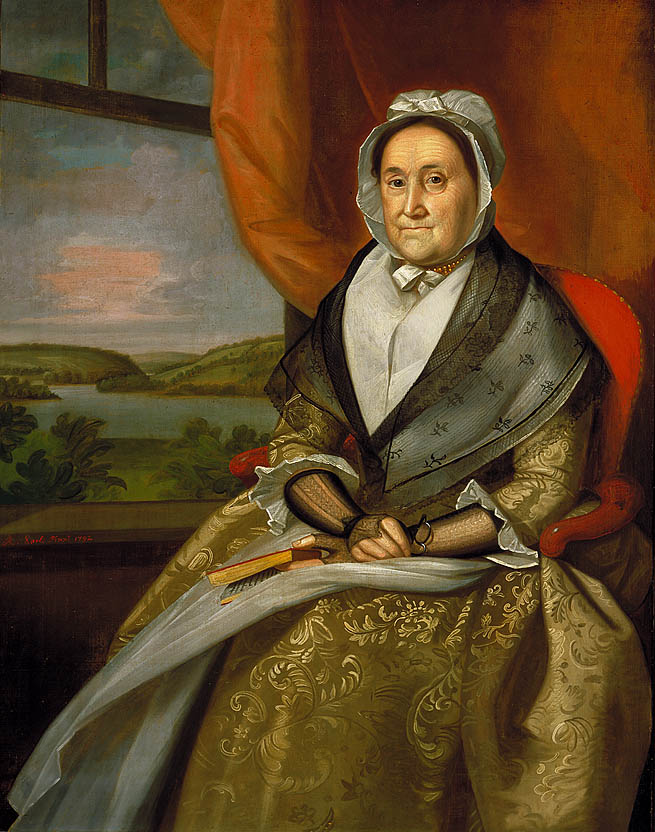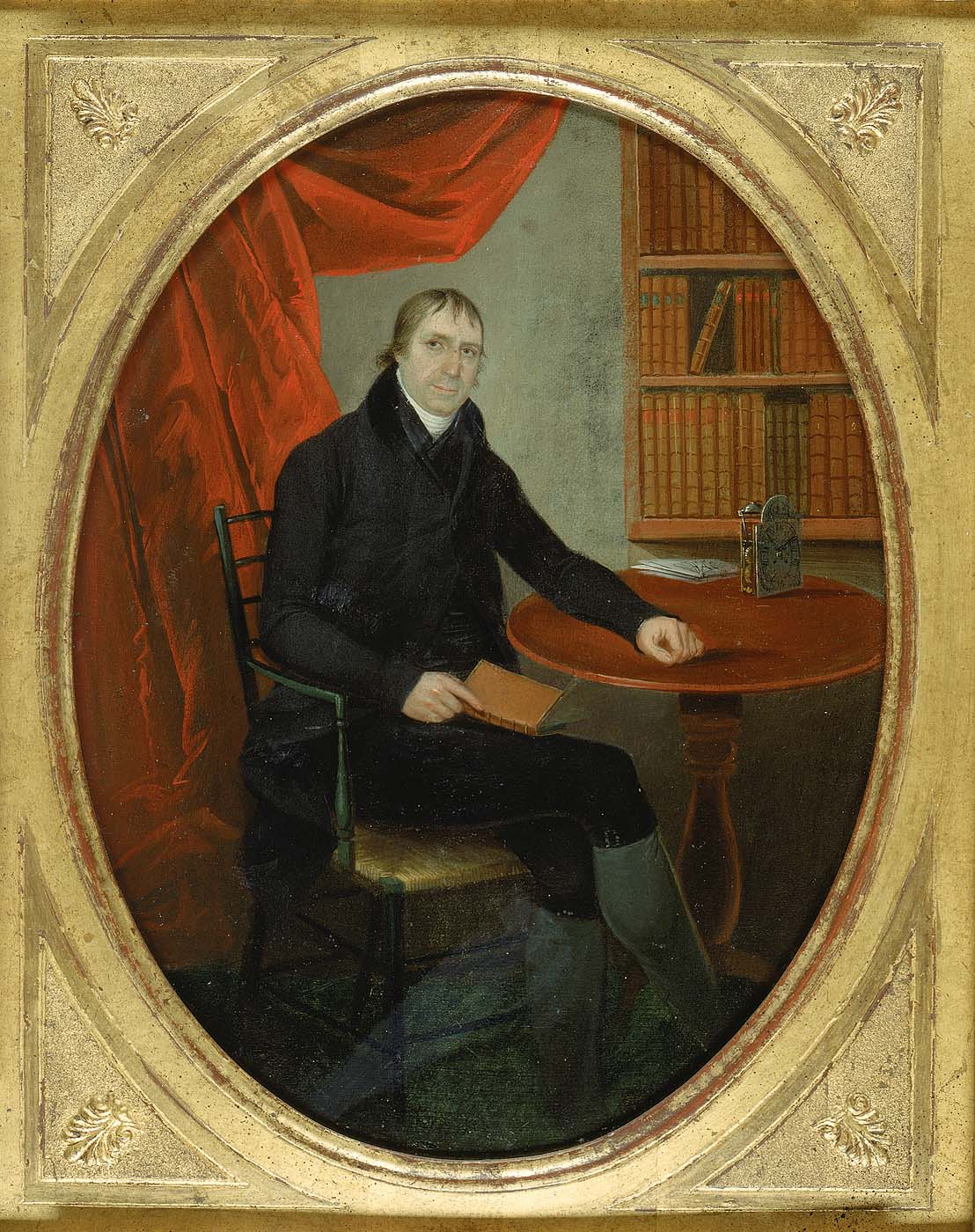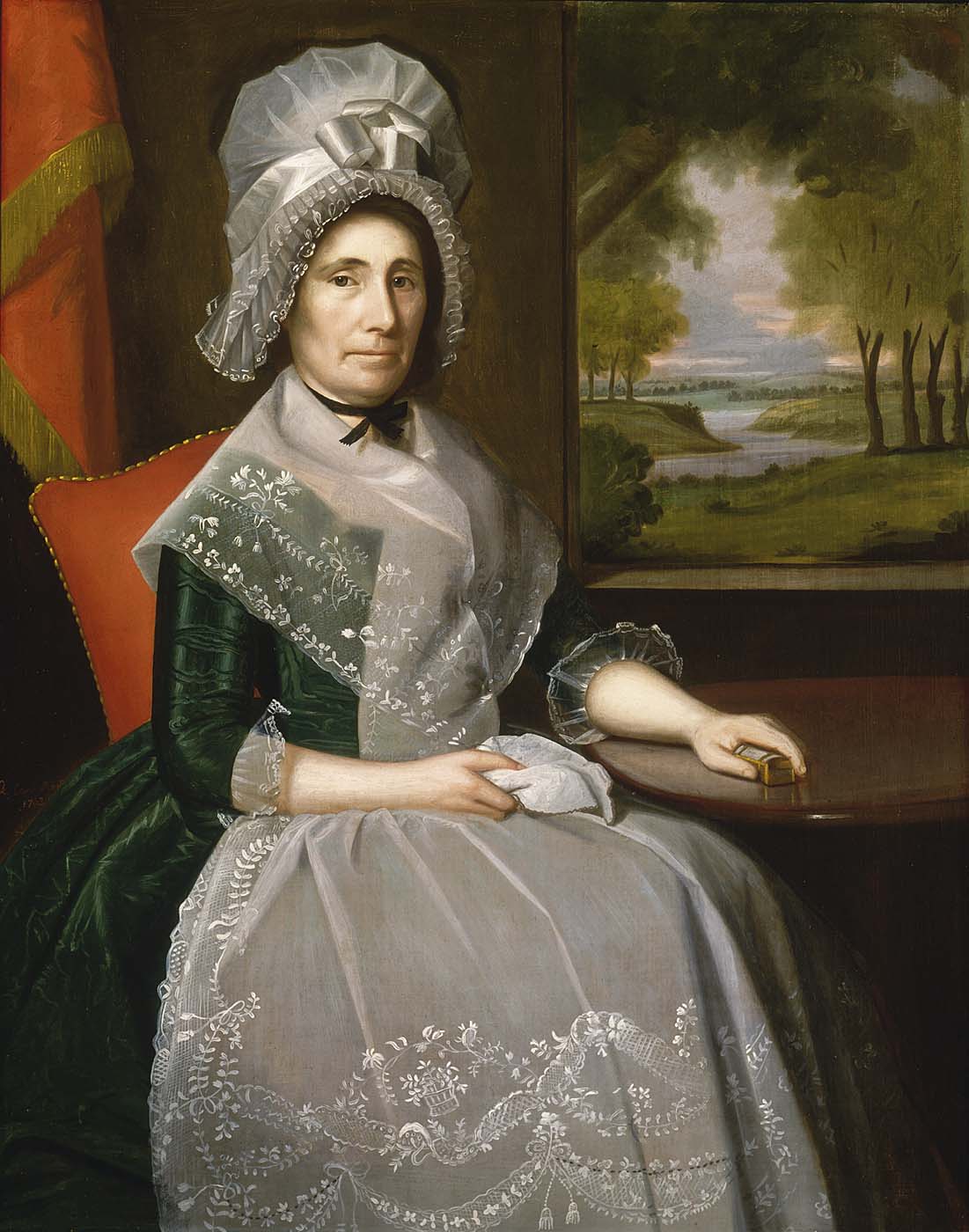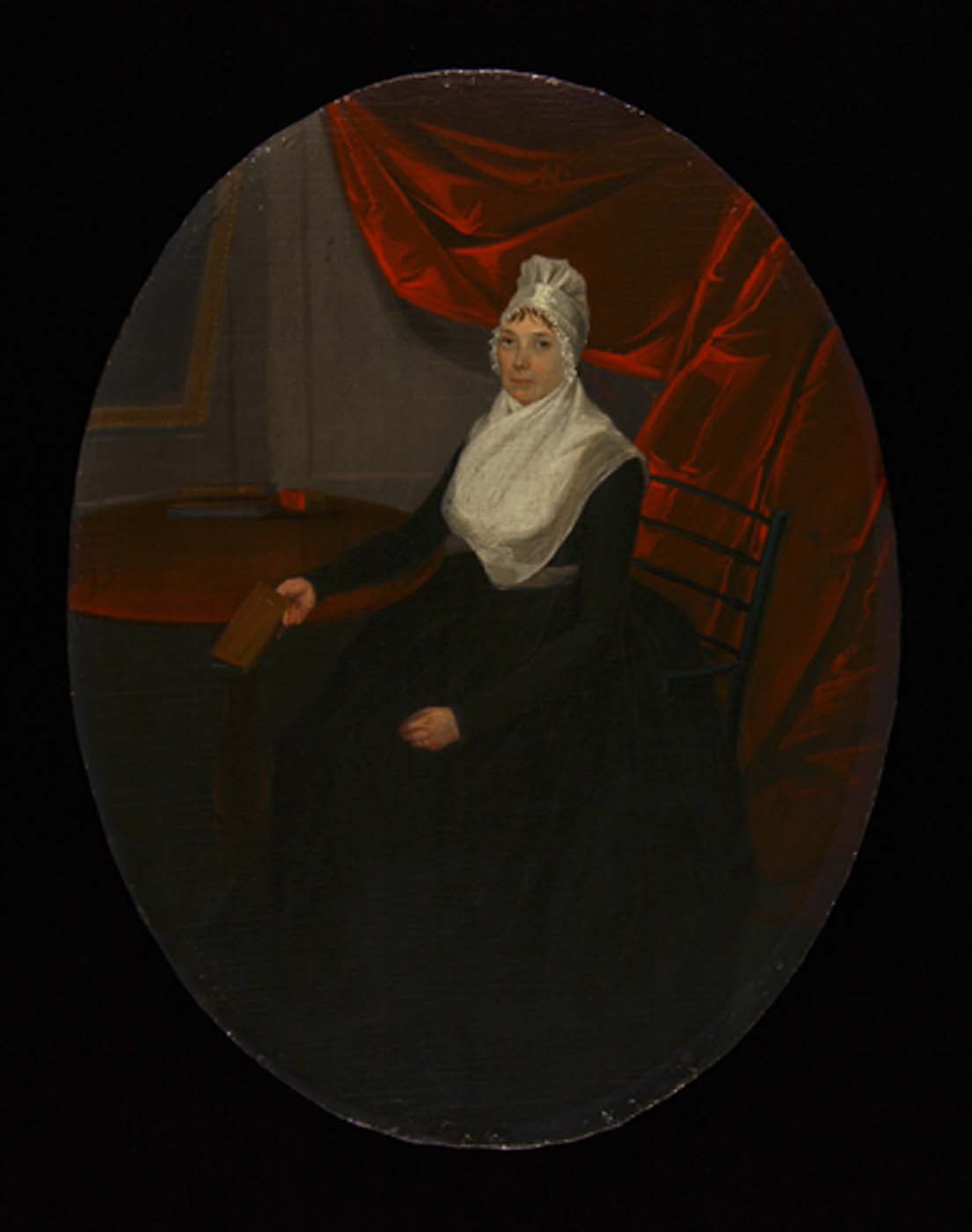Ralph Earl
Ralph Earl grew up in a family of farmers and craftsmen. He refused to fight during the Revolutionary War, and his father’s suspicion that he was a spy for the British led him to disinherit his son. Earl left his wife (who was also his cousin) and their children and fled to England, where he studied with Benjamin West. After the war, he returned to America with a British wife and established himself as a portraitist in New York. But family problems, alcoholism, and debt made for a rocky career in his native country. Earl was imprisoned from 1786 to 1788, and a group of New York patrons, who formed the Society for the Relief of Distressed Debtors, helped him to regain his freedom through portrait commissions. He settled in Connecticut, where his patrons, the country gentry, appreciated his straightforward landscapes and portraits, which highlighted their achievements and aspirations. (Kornhauser, Ralph Earl: The Face of the Young Republic, 1991) Although ambitious, Earl had a self-destructive streak, and he eventually died from drinking. (Maxwell, “‘Though Inanimate, They Speak’: A Cultural Studies Approach to Ralph Earl’s Eighteenth-century American Portraiture,” PhD diss., 1997






